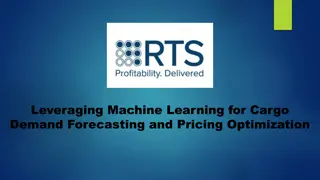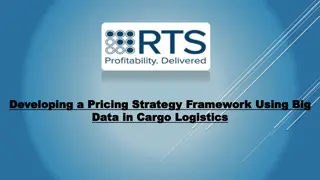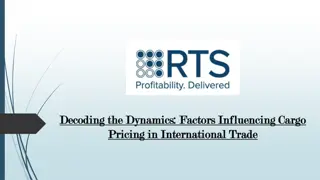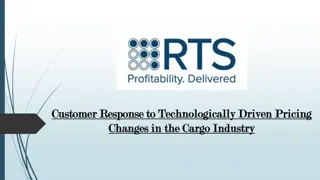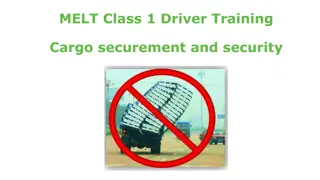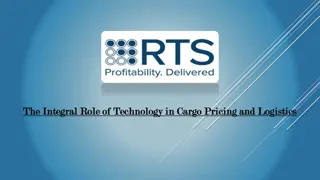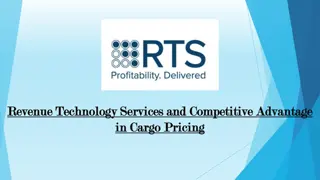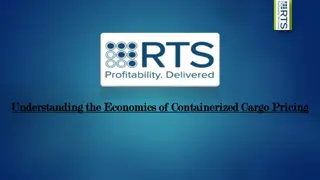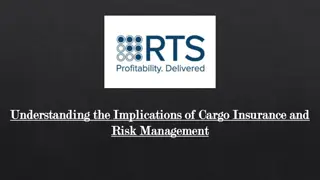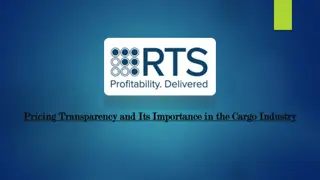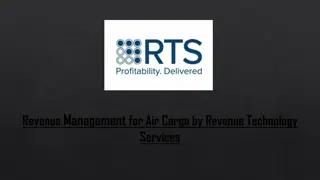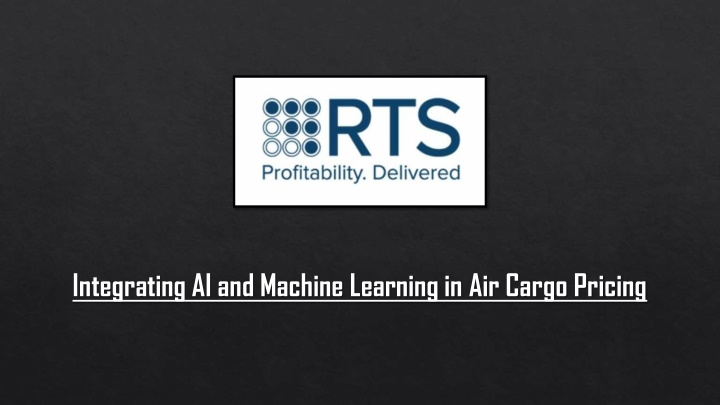
Integrating AI and Machine Learning in Air Cargo Pricing
In the dynamic and highly competitive world of air cargo, efficient pricing strategies are crucial for maximizing profitability and staying ahead of the competition. With the advent of advanced technologies, the integration of artificial intelligence
Download Presentation

Please find below an Image/Link to download the presentation.
The content on the website is provided AS IS for your information and personal use only. It may not be sold, licensed, or shared on other websites without obtaining consent from the author. If you encounter any issues during the download, it is possible that the publisher has removed the file from their server.
You are allowed to download the files provided on this website for personal or commercial use, subject to the condition that they are used lawfully. All files are the property of their respective owners.
The content on the website is provided AS IS for your information and personal use only. It may not be sold, licensed, or shared on other websites without obtaining consent from the author.
E N D
Presentation Transcript
In the dynamic and highly competitive world of air cargo, efficient pricing strategies are crucial for maximizing profitability and staying ahead of the competition. With the advent of advanced technologies, the integration of artificial intelligence (AI) and machine learning (ML) into air cargo pricingis revolutionizing the industry. Revenue Technology Services (RTS) is at the forefront of this transformation, leveraging these cutting-edge tools to enhance air cargo pricing strategies. The Role of AI and ML in Air Cargo Pricing AI and ML are game-changers for the air cargo industry. These technologies can process vast amounts of data at unprecedented speeds, enabling airlines to make more informed and accurate pricing decisions. Traditional pricing models often rely on historical data and human intuition, which can be limiting and prone to errors. In contrast, AI and ML algorithms can analyze real-time data from multiple sources, including market trends, customer behavior, and competitor pricing, to develop dynamic and adaptive pricing strategies.
Benefits of Integrating AI and ML 1.Enhanced Accuracy and Efficiency: AI and ML algorithms can identify patterns and correlations that are impossible for humans to detect. By analyzing factors such as demand fluctuations, seasonality, and market conditions, these technologies provide more precise pricing recommendations. This not only improves accuracy but also significantly reduces the time and effort required to set prices manually. 2.Dynamic Pricing: One of the most significant advantages of AI and ML in air cargo pricingis the ability to implement dynamic pricing. Dynamic pricing adjusts rates in real-time based on current market conditions and demand levels. This ensures that airlines can optimize their pricing strategies to capture maximum revenue, especially during peak periods or in response to sudden changes in demand. 3.Improved Forecasting: Accurate demand forecasting is critical for effective pricing. AI and ML can analyze historical data and current market trends to predict future demand with high precision. This allows airlines to anticipate market shifts and adjust their pricing strategies proactively, minimizing the risk of overpricing or underpricing. 4.Personalized Pricing: AI and ML can also enable personalized pricing strategies tailored to individual customers or specific segments. By analyzing customer behavior and preferences, airlines can offer customized pricing and promotions, enhancing customer satisfaction and loyalty. Personalized pricing strategies can also help airlines capture additional revenue from high-value customers.
Challenges and Considerations While the benefits of integrating AI and ML in air cargo pricing are substantial, there are also challenges to consider. Implementing these technologies requires significant investment in infrastructure, data management, and skilled personnel. Additionally, ensuring data privacy and security is paramount, as the misuse of sensitive information can have severe consequences. Moreover, the transition to AI and ML-driven pricing models must be managed carefully to avoid disruptions. Airlines need to strike a balance between leveraging technology and maintaining human oversight to address unforeseen issues and ensure that pricing strategies align with overall business objectives. Conclusion The integration of AI and ML in air cargo pricingby Revenue Technology Services is a transformative step toward optimizing pricing strategies in the industry. By harnessing the power of these advanced technologies, airlines can enhance accuracy, efficiency, and profitability. As the air cargo industry continues to evolve, the adoption of AI and ML will become increasingly essential for staying competitive and meeting the demands of a rapidly changing market. With careful implementation and strategic planning, the future of air cargo pricing looks promising, driven by the innovations brought by AI and ML.




